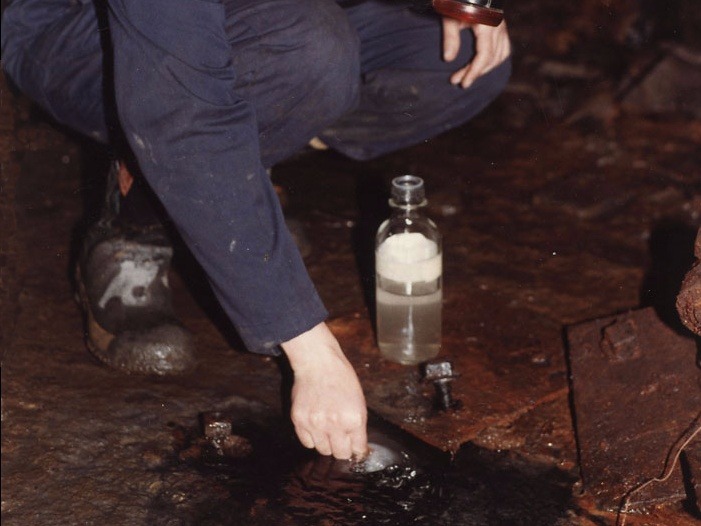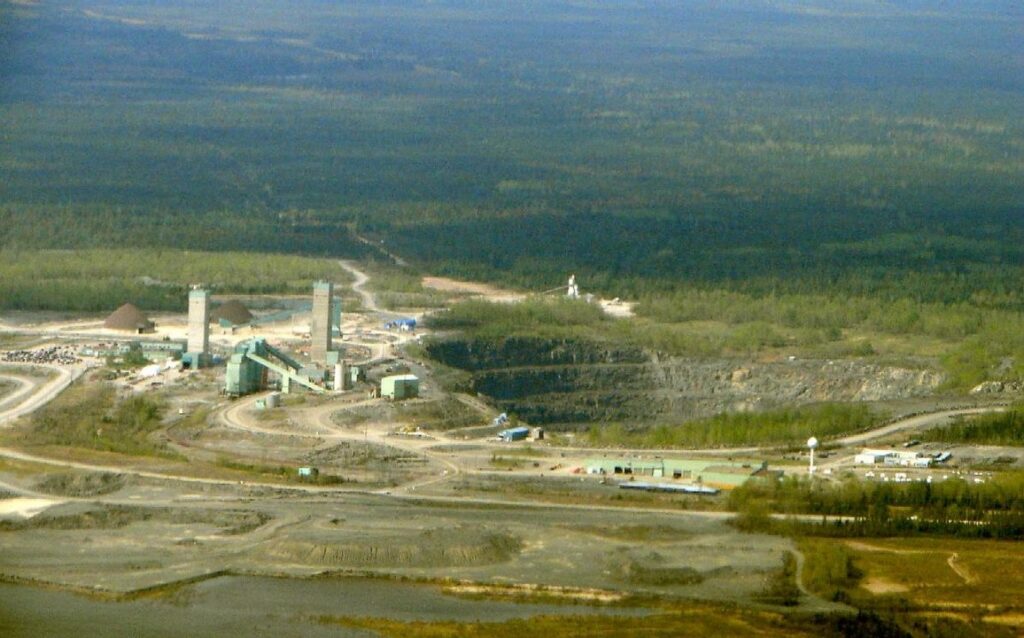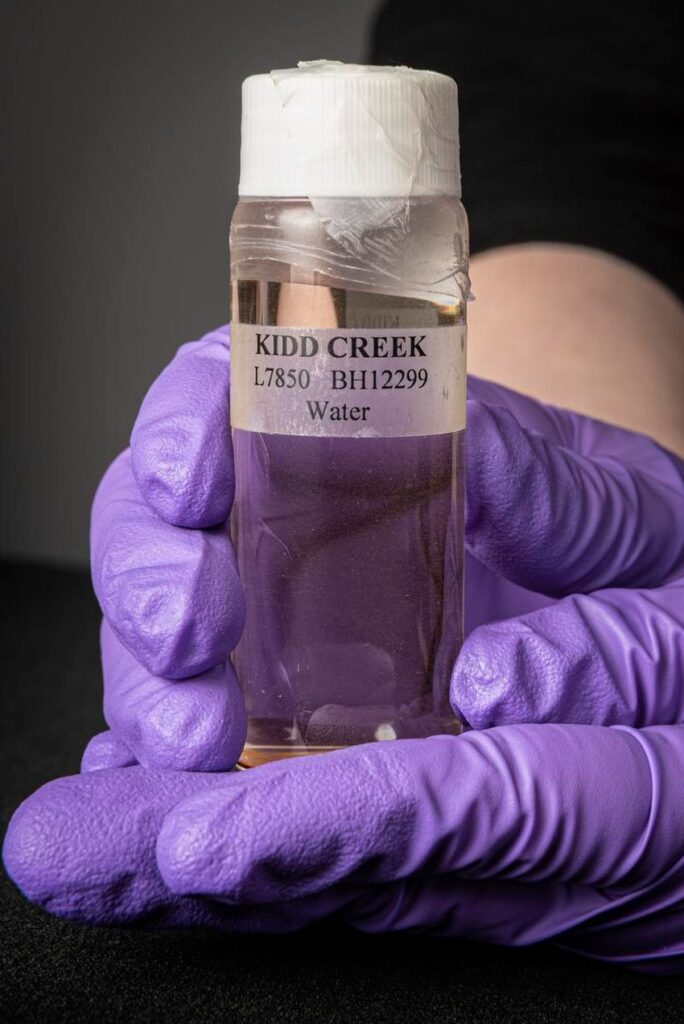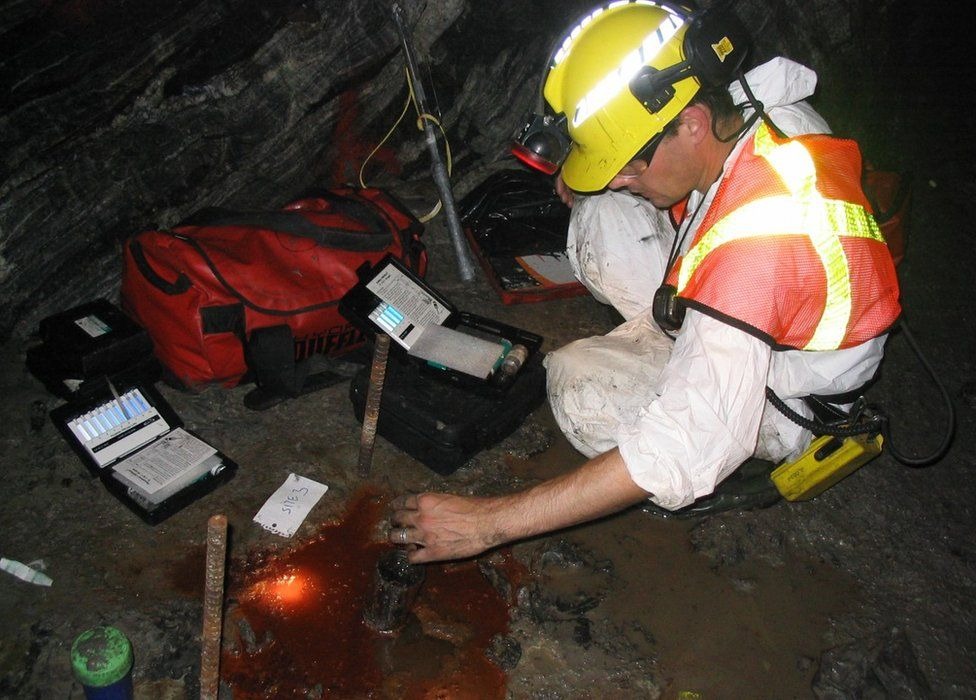
But Don’t Take a Sip!
In a remote corner of a Canadian mine lies an astonishing revelation – the oldest water ever discovered on Earth. Plunging to a staggering depth of approximately 3 kilometers (1.8 miles), this ancient aqua dates back a mind-boggling 2 billion years.
Cast your mind back to 2013, when the same intrepid team of researchers unearthed water that could be traced back around 1.5 billion years. Not content to rest on their laurels, these scientists delved even deeper, embarking on a quest to reveal a reservoir of even greater antiquity. And their tenacity paid off – their recent find pushes the boundary of ancient water by an impressive half a billion years.

Nestled within the bowels of the Kidd Mine in Ontario, Canada, this unique water deposit was stumbled upon during the miners’ relentless pursuit of copper, zinc, and silver. What makes this discovery so extraordinary is not just its age, but the manner in which it was studied. By analyzing the gases entrapped within the liquid, including helium and xenon, scientists can meticulously deduce its age, almost like decoding a secret message from the past.
Professor Barbara Sherwood Lollar, who unveiled this astonishing find, revealed, “People often visualize this water as some minuscule amount trapped within the rock, but it’s quite the opposite. It’s bubbling up, flowing at rates of liters per minute – a volume much grander than anyone anticipated.”

However, the water’s venerable age is just the tip of the iceberg in terms of significance. As the researchers closely examined this liquid time capsule, they stumbled upon a tantalizing trace of life. While tangible living bacteria remain elusive, the very essence of life – its distinctive fingerprint – was unmistakably present. This finding hints at the possibility of an enduring microcosm that has thrived within this water for an astonishing stretch of time.
A pivotal discovery from the earlier analysis of water, aged 1.5 billion years and extracted from a depth of 2.4 kilometers, was the revelation that the sulphate content wasn’t transported by surface water, but rather generated in situ due to a chemical interplay between water and rock. This revelation unveils a potential scenario where the geological conditions within these age-old water pools could serve as self-sufficient havens for microbial life, forming underground ecosystems that could persist for billions of years.

In the words of one of the researchers, Long Li from the University of Alberta, “The wow factor is high.” Li further expounds, suggesting that if geological processes can naturally generate a continuous energy supply within these rocks, it could drastically expand the horizons of the terrestrial subsurface biosphere, both in terms of its scope and its depth.
This discovery paints a compelling portrait of survival against incredible odds – life persevering and thriving in water as ancient and remote as the depths of the Earth’s crust. With roughly half of the Earth’s continental crust consisting of comparable billion-year-old rocks, this revelation widens the potential habitats suitable for life. Furthermore, it tantalizingly hints at the possibility of life beyond our pale blue dot.

As we ponder these deep underground reservoirs that could shelter life forms unimaginably different from those we know, our gaze extends beyond our own planet. On Mars, where surface rivers are but a distant memory, pockets of water and ice beneath the surface hold the promise of sustaining life, reminding us that the quest for life in the universe is far from over.

Leave a Reply